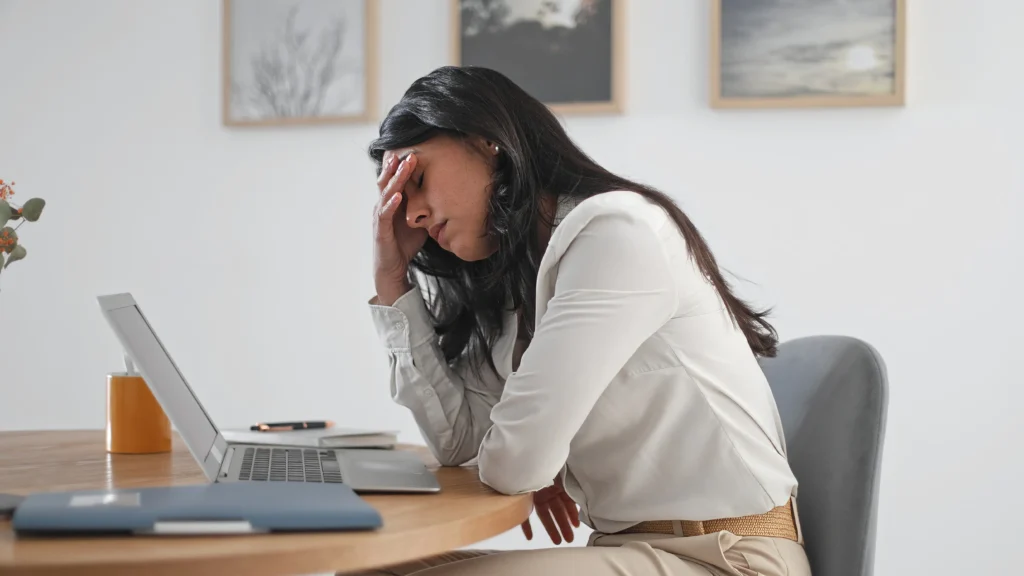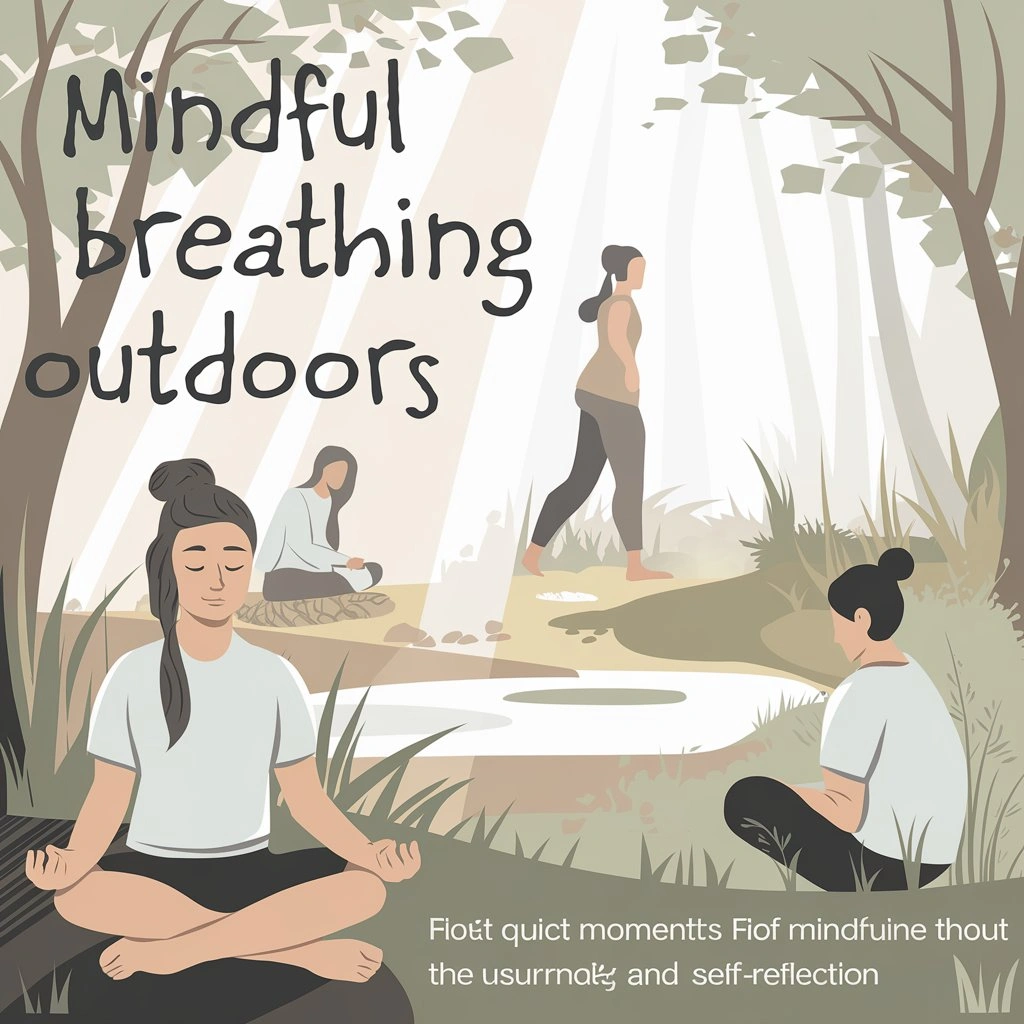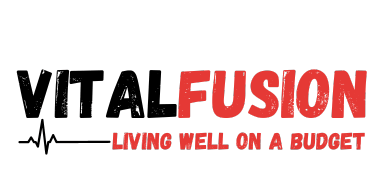Anxiety can feel overwhelming, but managing it doesn’t have to break the bank. Whether you’re facing daily stressors or occasional anxiety, here are 13 budget-friendly strategies to help you cope effectively.
Table of Contents
1. Practice Mindfulness Meditation
Meditation is a powerful tool for reducing anxiety. You can find numerous free apps and online videos that guide you in mindfulness practices. Start with just 5-10 minutes a day to ground yourself. This can help calm your mind and sharpen your focus without costing you a dime.
2. Engage in Physical Activity
Exercise is a natural stress reliever. You don’t need a gym membership to stay active. Try walking, jogging, or doing home workouts. Even playing outside boosts your mood. Aim for at least 30 minutes per day; this could be as simple as a brisk walk around your neighborhood.
3. Connect with Nature
Spending time outdoors can do wonders for your mental health. Nature provides a peaceful environment that can help reduce anxiety. Consider hiking, gardening, or just sitting in a park. The beauty of the outdoors is free and available to everyone.
4. Journaling
Writing down your thoughts and feelings can be therapeutic. Grab a notebook or use a free app to express yourself. This can help you process your emotions and create clarity. Aim to write a few sentences or paragraphs daily.
5. Limit Caffeine and Sugar
Both caffeine and sugar can increase anxiety levels. Try to minimize your intake and replace these with herbal teas or water. You’ll notice a significant difference in how you feel. Staying hydrated also supports overall mental wellness.
6. Utilize Breathing Techniques
Breathing exercises are a simple yet effective way to manage anxiety. Techniques like deep breathing or the 4-7-8 method can help calm your nervous system. You can practice these anywhere, anytime, and they cost nothing to implement.
7. Foster Social Connections
Engaging with friends or family can help distract from anxious thoughts. Reach out for a chat, or schedule a low-cost outing, like a picnic. Building a support network doesn’t have to be expensive, and the emotional support is invaluable.
8. Volunteer Your Time
Volunteering can provide both purpose and perspective, helping you cope with anxiety. Look for local organizations where you can offer 1-2 hours per week. Helping others can lift your spirits and decrease feelings of isolation.
9. Engage in a Hobby
A fun hobby can divert your attention from anxious thoughts. Whether it’s painting, knitting, or playing an instrument, make time for activities you enjoy. Not only is this good for your mind, but it can also be low-cost or even free.
10. Practice Gratitude
Focusing on what you’re thankful for can minimize anxiety. Start each day by listing three things you appreciate. This simple practice shifts your mindset from worry to gratitude, enhancing your overall mental well-being.
11. Establish a Routine
Creating a structured daily routine can bring a sense of control and stability. Incorporate activities that promote mental health, whether it’s set meal times or designated self-care hours. A routine helps create predictability, which can fight anxiety.
12. Learn Relaxation Techniques
Progressive muscle relaxation or guided imagery are great ways to unwind. Many online resources provide free sessions to help you learn these techniques. With practice, you can incorporate them into your daily life, limiting tension without spending money.
13. Seek Support From Community Resources
Explore local mental health resources, which may offer workshops or support groups at little to no cost. Many communities have libraries or wellness centers that host events focused on mental health awareness and coping strategies. Take advantage of these opportunities!
By adopting these strategies, you can significantly reduce anxiety without straining your financial resources. Empower yourself with these budget-friendly solutions, and take the first steps towards a calmer, more balanced life.

Understanding the Connection Between Anxiety and Finances
Many people experience a strong link between anxiety and finances. Understanding this connection can be the first step towards managing both stressors effectively. Anxiety about money can stem from various sources, including job instability, unexpected expenses, or overwhelming debt. These stressors can manifest in various ways, leading to a vicious cycle of worry and financial strain.
When you have anxiety about your financial situation, you might find yourself constantly preoccupied with thoughts about bills, loans, and your overall monetary health. This worry can take a toll on your mental and physical well-being, leading to sleepless nights and an inability to focus on daily tasks. It’s essential to recognize that financial anxiety is common, and many individuals face similar challenges.
There are several factors contributing to financial anxiety. Here are some of the most significant:
- Job Insecurity: The fear of losing a job can create a constant sense of unease, leading to anxiety related to future finances.
- Living Paycheck to Paycheck: When you’re struggling to make ends meet, even slight financial changes can trigger stress.
- Debt: High levels of student loans, credit cards, or personal loans can lead to feelings of hopelessness and anxiety.
- Unexpected Expenses: Emergencies like medical bills or car repairs can come at inconvenient times, heightening feelings of anxiety.
- Social Pressure: Comparing your financial situation to others can lead to feelings of inadequacy and anxiety.
To manage the connection between anxiety and finances, several strategies can help alleviate both mental worries and financial stress:
- Budget Wisely: Creating a budget allows you to take control of your finances. It can help you track your income and expenses better and cultivate a plan that works for you.
- Educate Yourself: Knowledge is power when it comes to finances. Learning about personal finance management can reduce anxiety about money.
- Build an Emergency Fund: Having savings set aside for unexpected expenses can give you peace of mind and lessen anxiety about financial surprises.
- Address Debt Wisely: Prioritize your debts and consider strategies like the snowball or avalanche methods to manage repayments more effectively.
- Seek Professional Help: If financial worries become overwhelming, consider consulting a financial advisor or mental health professional, as both can offer guidance tailored to your situation.
- Practice Mindfulness: Incorporate mindfulness techniques like meditation or yoga to help manage anxiety and stress related to finances.
- Set Financial Goals: Establish clear, achievable financial goals. These can help provide direction and focus your efforts, which can reduce feelings of anxiety.
- Limit Exposure to News: Constant news about financial markets can increase anxiety levels. Limit time spent consuming this information to help maintain peace of mind.
- Connect with Supportive People: Discuss your concerns with trusted friends or family. They may offer helpful perspectives and emotional support.
- Utilize Community Resources: Explore community resources such as workshops, financial literacy programs, or support groups, all of which can offer guidance and relief.
- Focus on What You Can Control: Rather than worrying about things beyond your control, concentrate on actionable steps that can improve your financial condition.
- Practice Gratitude: Regularly acknowledging what you are thankful for can shift your focus from financial worries to positive aspects of your life.
Understanding the connection between anxiety and finances can give you the tools necessary to tackle both issues. By implementing these strategies, individuals can work towards achieving a healthier, more balanced mindset regarding their financial realities. Remember, you are not alone in this journey, and taking small, consistent steps can make a significant difference.

Incorporating Mindfulness Practices into Your Daily Routine
In today’s fast-paced world, integrating mindfulness practices into your daily routine can significantly enhance your overall well-being. Mindfulness allows you to cultivate awareness and live in the moment, reducing stress and anxiety. Here are several practical ways to infuse mindfulness into your everyday life.
Start Your Day Mindfully
Begin your morning with intention. Instead of immediately reaching for your phone, take a few moments to breathe deeply and set your intentions for the day. Consider adopting a simple morning ritual that includes:
- Deep Breathing: Spend just five minutes focusing on your breath. Inhale slowly through your nose, hold for a moment, and then exhale through your mouth.
- Gratitude Journaling: Write down three things you are grateful for each morning. This helps shift your mindset to a more positive outlook.
- Mindful Eating: During breakfast, focus on the taste, texture, and aroma of your food. Chew slowly and enjoy each bite.
Practice Mindful Movement
Physical activity into your routine can also be a form of mindfulness. Whether it’s yoga, walking, or any form of exercise, attention to your movement helps ground you in the present. Here are some suggestions:
- Yoga: Engage in a session that emphasizes breath and awareness of your body. This not only enhances flexibility but also calms the mind.
- Walking: When walking, pay attention to the sensations in your feet as they touch the ground. Notice the sights, sounds, and smells around you to create a richer experience.
Mindfulness in Daily Tasks
Being mindful doesn’t only relate to designated practices like meditation; it can be woven into mundane activities. Consider these approaches:
- Eating: When enjoying a meal, focus solely on the experience of eating. Savor each flavor, and limit distractions like TV or phones.
- Household Chores: Turn chores into a mindful endeavor. Whether washing dishes or cleaning the house, be fully present and appreciate the process rather than rushing through it.
- Commuting: Use your commute as an opportunity for mindfulness. Listen to calming music, an inspiring podcast, or simply observe your surroundings rather than getting lost in thought.
Mindful Breaks Throughout the Day
Incorporate short mindfulness breaks during your day, especially when feeling overwhelmed. Here’s how you can do this effectively:
- Stretching: Stand up, stretch your body, and take deep breaths for a few minutes every hour.
- Mindful Listening: Practice active listening in conversations. Focus fully on the speaker without planning your response while they talk.
- Guided Meditation: Even a few minutes of guided meditation via an app can provide clarity and reduce stress.
Evening Mindfulness Routine
End your day with a calming mindfulness practice to reflect and unwind. Consider these practices:
- Reflection: As your day comes to a close, think about what went well today. Recognize achievements, big or small, to reinforce a positive mindset.
- Nightly Meditation: Spend 5-10 minutes before sleep practicing mindfulness meditation to release stress and prepare your mind for rest.
Incorporate Nature
Connecting with nature can deepen your mindfulness practice. Spend time outdoors, even if it’s just a short walk in a nearby park. Observe the details around you, such as the rustling leaves, the play of light, or the colors of flowers, to enhance your sense of presence.
Integrating mindfulness into your daily routine doesn’t require a complete lifestyle overhaul. With small, consistent practices, you can cultivate a greater sense of peace and clarity amid the chaos of daily life. Begin today by choosing one or two of these strategies and gradually build from there. Your journey toward mindfulness is a personal one, and every step counts.

Community Resources for Low-Cost Mental Health Support
Finding mental health support can be challenging, especially when you’re trying to stick to a budget. Many people are unaware of the community resources available that offer low-cost or no-cost mental health services. Here, we will explore some of these resources, providing you with valuable options to consider.
Local community organizations often offer mental health programs at little to no cost. These organizations may include:
- Nonprofits: Many nonprofit organizations focus on mental health awareness and provide free support groups and counseling services.
- Faith-Based Organizations: Churches and other religious institutions may offer free counseling or support groups to community members.
- University Programs: Colleges and universities with psychology or counseling programs often have clinics where students provide therapy under supervision for a reduced fee.
Support groups can also be incredibly beneficial. They provide a safe space where individuals can share their experiences and learn from others. Look for:
- Peer Support Groups: These are run by individuals who have experienced mental health challenges themselves, offering empathy and understanding.
- Online Support Groups: Many organizations have shifted to virtual platforms, making it easier to access support from home.
You might also want to look into local health departments, as they often have mental health services available. Health departments may provide:
- Crisis Counseling: Immediate, short-term support for those struggling with acute mental health issues.
- Resource Referrals: Guidance to community resources that suit your specific needs.
Community health clinics are a great option for affordable services. Many clinics offer sliding scale fees based on income, making mental health care accessible to those on a tight budget. These clinics often provide:
- Therapy Sessions: Licensed therapists who work on a sliding scale.
- Medication Management: Psychiatrist visits that also take into account your financial situation.
The internet is another handy tool when searching for mental health resources. Numerous websites focus on providing low-cost or free mental health services. Here are a few to keep in mind:
- Open Path Collective: This organization connects individuals with therapists who offer sessions for $30 to $60.
- 7 Cups: A free online text chat service that offers emotional support 24/7.
- National Alliance on Mental Illness (NAMI): NAMI provides access to resources and support groups for those affected by mental illness.
Local hotlines can serve as immediate support, offering comfort and guidance. Here’s how they typically function:
- Crisis Hotlines: Callers can speak confidentially with trained counselors, often available 24/7.
- Text Lines: For those who prefer texting, many services offer support via SMS.
Your workplace may also have an Employee Assistance Program (EAP) that provides mental health resources. EAPs can offer:
- Counseling Services: Short-term counseling sessions at no cost to employees.
- Workshops and Training: Resources to help manage stress and improve well-being.
Additionally, libraries can be a surprising source of mental health support. Many libraries provide free access to mental health resources, including:
- Books and E-books: Literature on coping strategies, self-help techniques, and mindfulness.
- Workshops: Some libraries host free workshops focusing on mental health education and coping skills.
There are numerous community resources available to provide low-cost mental health support. Exploring these options can help you find the assistance you need without overspending. Remember, taking the first step by reaching out for help is an important part of managing mental well-being. You’re not alone, and there are many willing to support you on your journey.

The Role of Physical Activity in Managing Anxiety on a Budget
Managing anxiety can be challenging, but integrating physical activity into your routine is an excellent way to help alleviate symptoms. Fortunately, you don’t need a gym membership or expensive classes to reap the benefits. Let’s explore how staying active can improve your mental health while keeping your budget in check.
Understanding the Connection
Physical activity is more than just a way to stay fit; it has profound effects on your mental health. When you exercise, your body releases endorphins, which are natural mood lifters. This chemical response can help combat feelings of anxiety. Engaging in regular physical activity can lead to better sleep and a more positive outlook on life—two crucial elements in managing anxiety.
Simple and Affordable Ways to Get Active
Here are some great ways to incorporate more physical activity into your life without breaking the bank:
- Walking: One of the easiest and most accessible forms of exercise. Just put on your shoes and hit the pavement. Whether you stroll through your neighborhood or walk in a local park, walking can clear your mind and elevate your mood.
- Home Workouts: There are countless free resources available online, including YouTube workouts, fitness apps, and blogs. Explore yoga, bodyweight exercises, or dance routines that require little to no equipment.
- Join Community Groups: Many communities offer free fitness classes or walking clubs. Check your local libraries or community centers for opportunities to meet new people while exercising.
- Bike Riding: If you have a bike, take the time to ride around your area. Biking not only helps you get some exercise but allows you to explore new neighborhoods.
- Gardening: Believe it or not, gardening is a form of physical activity! Digging, planting, weeding, and harvesting can all help reduce anxiety while enjoying the outdoors.
Setting Achievable Goals
When trying to manage anxiety through physical activity, it’s vital to set realistic goals. Here are some tips for creating attainable targets:
- Start Small: Don’t overwhelm yourself with ambitious workout plans. Start by aiming for 10-15 minutes of physical activity a day, gradually increasing as you feel more comfortable.
- Track Your Progress: Keep a journal or use an app to track your activities and feelings. This can help you see improvements over time and keep you motivated.
- Mix It Up: Avoid boredom by varying your activities. Try walking one day, yoga the next, and perhaps dancing over the weekend. Different exercises can also target various muscle groups and keep your routine exciting.
Making It Fun
You’re more likely to stick to an activity if you enjoy it. Here are a few fun ways to integrate physical activity into your life:
- Dance: Turn up your favorite tunes and dance around your living room. It’s a fantastic way to get your heart pumping and lift your spirits.
- Play Games: Engage in activities like frisbee, soccer, or volleyball with friends or family in the park. These games promote social interaction and boost your mood.
- Explore Nature: Hiking can be a delightful way to spend time outdoors while being active. Find nearby trails and make it a weekly adventure.
Mindfulness
You can blend physical activity with mindfulness practices to enhance your coping strategies. Gentle exercises like yoga or tai chi focus on your breath and promote relaxation, helping you manage anxiety more effectively. Plus, both can be practiced at home for little to no cost.
The Importance of Consistency
While it may take time to notice the full benefits of physical activity on your anxiety levels, consistency is key. Aim to incorporate some form of exercise into your daily routine. Even on days when motivation wanes, moving your body in any way can still help uplift your mood.
Physical activity is a powerful tool for managing anxiety, and you don’t have to spend a lot to enjoy its benefits. By engaging in simple exercises, setting achievable goals, and finding activities you love, you can bolster your mental health and enjoy a balanced lifestyle—all while staying within budget.

Conclusion
Coping with anxiety doesn’t have to burden your wallet. Understanding the connection between anxiety and finances is a crucial first step. Recognizing that financial stress can exacerbate anxiety allows you to approach your mental health with practical solutions that don’t break the bank. By integrating mindfulness practices into your daily routine, you can cultivate a sense of calm and presence without spending money. Simple techniques like meditation or deep breathing can significantly enhance your emotional resilience.
Moreover, tapping into community resources can provide you with invaluable support. Many organizations offer workshops, support groups, or counseling services at little to no cost, helping you feel less isolated and more connected. Physical activity also plays an essential role in managing anxiety. Engaging in affordable exercise routines, such as walking or home workouts, can boost your mood and reduce stress levels.
Ultimately, utilizing these 13 budget-friendly strategies offers hope and relief in your journey to manage anxiety. You have the tools and resources available to take charge of your mental health without incurring exorbitant expenses. Remember, prioritizing your well-being doesn’t have to be a financial strain. Embrace these strategies and make self-care a sustainable part of your life, enabling you to thrive while staying within your budget. By taking proactive steps, you can navigate your anxiety more effectively and promote a healthier, happier you.






